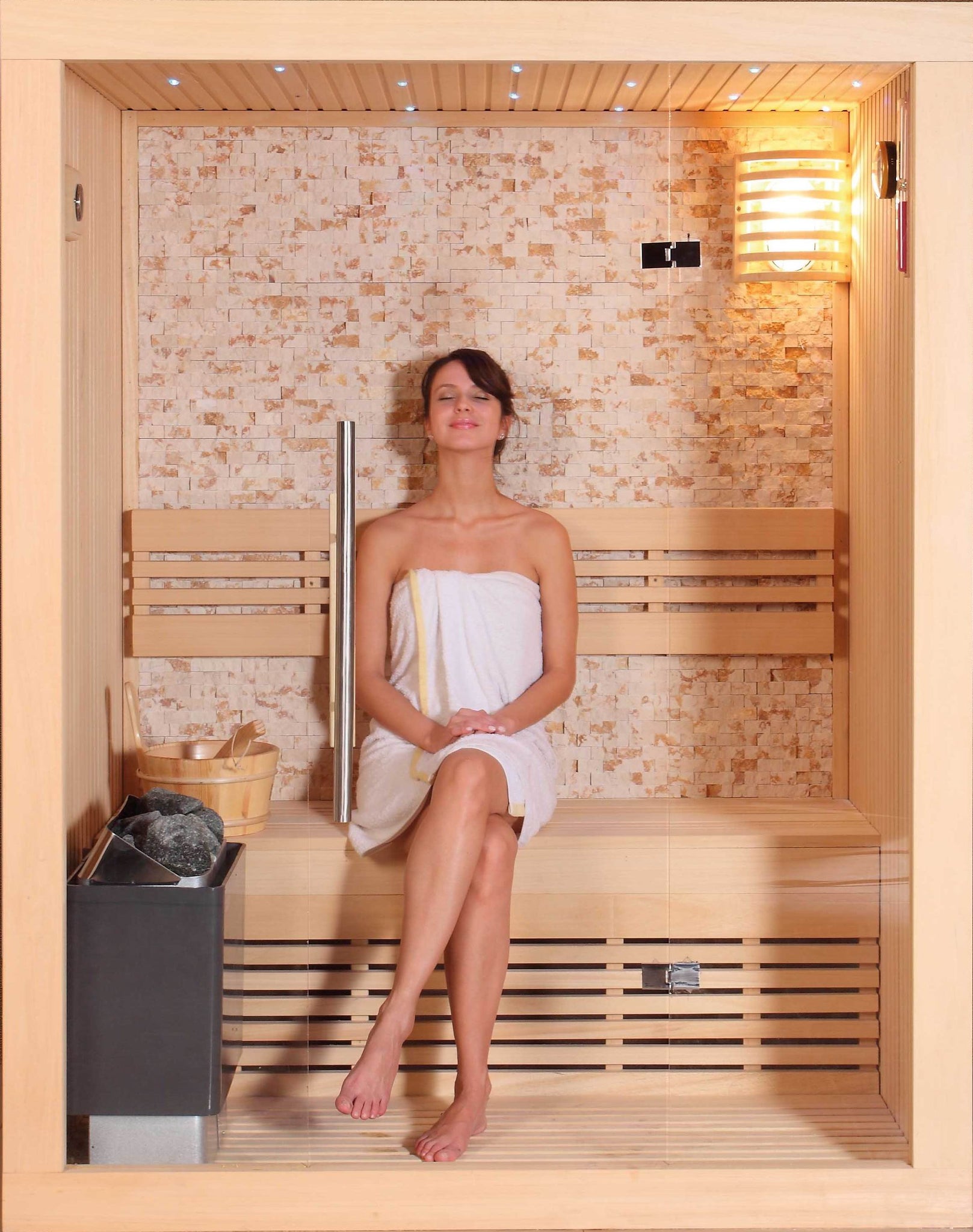The Definitive Guide to Traditional Sauna
The Definitive Guide to Traditional Sauna
Blog Article
Traditional Sauna Things To Know Before You Buy
Table of ContentsWhat Does Traditional Sauna Mean?7 Easy Facts About Traditional Sauna ShownThe 5-Second Trick For Traditional SaunaNot known Incorrect Statements About Traditional Sauna
The majority of the weight lost in a sauna is water loss and is re-gained upon rehydrating. Without a question sauna can be an essential part of a healthy weight loss program. To consider the differences between conventional and IR saunas, I will divide these into verifiable, theoretical, and fabricated differences.Thus, the most popular point in the saunawhich goes to the ceiling directly over the sauna heateris commonly between 185 and 190 F. Traditional Sauna. Claims that a conventional sauna goes beyond 200 F is just not real and not applicable for electrical saunas sold in the United States. The temperature level for a far-infrared sauna is normally established in between 120 and 140 F; nonetheless, unlike the typical sauna, the objective in and IR room is not to achieve a heat
Due to the fact that of this, the temperature difference is almost unnecessary, since excessive sweating causes both sauna kinds, yet the approach of heating the body is various. In an IR sauna the bather will feel hot and will certainly sweat a lot, however at much lower temperature levels. Thus, if the objective is to spend longer periods of time in the sauna, the IR sauna is a good choice.

How Traditional Sauna can Save You Time, Stress, and Money.
When the heat is accomplished, the elements cycle on and off to preserve the high temperature level. Many traditional sauna customers appreciate putting water over the rocks to develop heavy steam to increase sauna humidity levels. The advantages of putting water over the rocks include: making the area more comfy, moistening the nasal flows, and enabling the usage of aromatherapy by mixing crucial oils with the water.
In a far-infrared sauna, the heat waves pass through the body to properly warm the body and increase the body core temperature. To achieve this boosted temperature level, Far-infrared emitters develop infrared energy which is close to the same wavelength as that which the body naturally emitsoften described as the "Important Range" of 7 to 14 microns), so the power is well gotten by the body.
When the energy goes into the body, it creates the body temperature to raise and ultimately causes sweating. In an infrared sauna it is very important for the emitters/heaters to stay on practically constantly. Considering that there is no mass of rocks to preserve heat, the sauna will cool down if the emitters turned off.
As pointed out over, the sauna bather in an infrared room desires to place himself before operating emitters to obtain maximum see this take advantage of the warmth. The heating time for both areas can be very various, relying on exactly how the spaces are made use of. For a conventional sauna, a bather must permit 30-40 minutes for the room to accomplish a wanted temperature and to properly pre-heat the rocks.
Get This Report on Traditional Sauna
A well constructed sauna will usually achieve a temperature of 150-160 F in about 30-40 minutes (Traditional Sauna). For hotter temperature levels, the space might require to heat for a longer period. As soon as the space attains established temperature level, the heater will certainly cycle on and off, generally operating concerning 50% of the time. The protected walls and the heated rocks will maintain the space hot and at stable temperature levels.
To some, 15 mins was "lost" while the infrared power heated up the timber panels instead of warming a body, while others locate a pre-heated space to be more comfortable and believe an elevated starting temperature level is necessary to begin perspiring. The size of recommended usage for each area is around the same (10-15 minutes per session); nevertheless, because of the reduced air temperatures and the capacity to feel the impacts of infrared warmth faster than a traditional sauna, it is not unusual for a person to spend an overall of 20-30 mins in an infrared sauna.
Standard saunas often tend to be larger (thus use even more power) than infrared saunas, although typical saunas are certainly offered in one and two individual dimensions. For a read review two-person conventional sauna, 5x6 or 5x7 size is most popular. The leading bench can easily seat two or 3 people and is also enough time to relax throughout the sauna session.


The average cost per kWH of power in the united state is around $0.11, so a 4.5 kW heater will set you back about $.50 to run for one hour, if the heater runs continuously for one hour. Generally a sauna heating system will compete 75% of the initial hour and 50% of subsequent hours on given that the components cycle once the established temperature is attained.
The Basic Principles Of Traditional Sauna
A two individual far-infrared room is usually physically smaller sized than a traditional sauna, typically concerning 4' x 4' or smaller sized. The IR heater is generally 1.5-1.7 kW using a 120 volt 15 amp plug-in solution. Given that the space can be used sooner than a sauna space, we will certainly assume the area is utilized for to of an hour including warmth up time.
Lastly, there is a hardly ever gone over difference in the social experience in between both spaces. While our society has actually lost a few of the social advantage of the standard sauna experience, it can be very socially fulfilling. From family time in the sauna, to heart-felt discussions with loved ones, to sauna partiesthe typical sauna their explanation experience can result in intimate socializing.
The majority of greater end infrared spaces include colored light treatment, audio systems and full-glass fronts.
Report this page